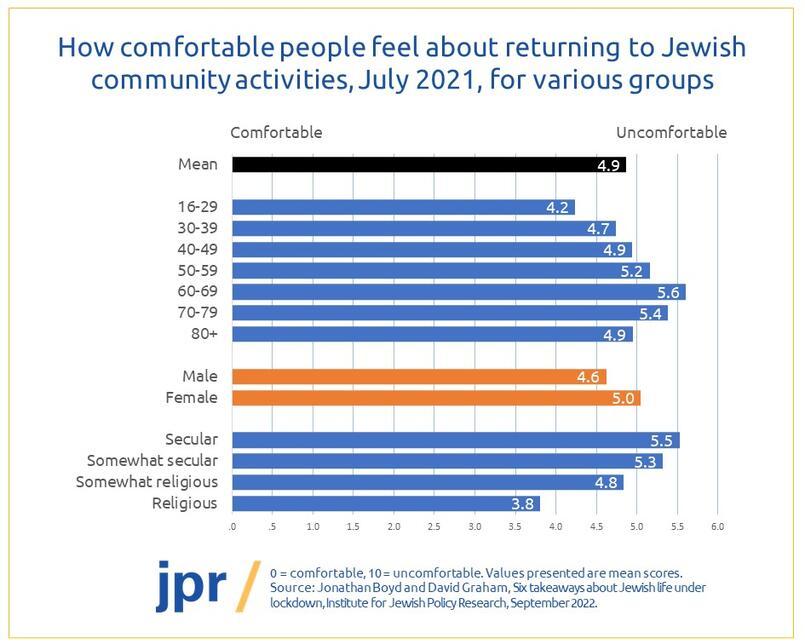With Yom Kippur behind us, a few thoughts on returning, praying and giving
Dr Jonathan Boyd
Dr Jonathan Boyd
Yamim noraim diary notes, 2022.
It seems to me that Rosh Hashana and Yom Kippur this year were critical test points. In July 2020, four months into the pandemic and as lockdown restrictions were first being lifted, we asked Jews how comfortable they felt about returning to in-person communal activities. On a scale of 0-10, where 0 was very comfortable and 10 was very uncomfortable, the mean score across the community was 5.8. A year later, in the summer of 2021, overall comfort levels had improved quite considerably, rising to 4.9. We’ll have a new score for 2022 soon, but it has almost certainly risen further again. Teshuva, in the literal meaning of the word, is happening. We are returning.
But the big question is whether the return will be complete. And Rosh Hashana and Yom Kippur were important markers. To what extent did numbers over Rosh Hashana and Yom Kippur this year return to their pre-pandemic levels? And to what extent was the atmosphere in synagogues around the country, perhaps particularly during those peaks Kol Nidre and Neila moments, feel as it did three years ago? There was both a quantitative and qualitative assessment to make, which no doubt many in synagogues made intuitively, but the empirics matter. The community went through an experience over the past few years that severely disrupted Jewish life and had the potential to cause irreparable damage. What happened in synagogues over those ten days between Rosh Hashana and Yom Kippur should tell us a lot about how harmful COVID-19 has really been to our community.

There was a nimbleness in how different denominations responded to the challenges of lockdown. Unencumbered by halachic restrictions, many progressive synagogues quickly moved Shabbat services online, and as a result, achieved higher participation rates among their membership than all other denominations. Many orthodox synagogues adjusted by running online services immediately prior to, or following Shabbat, but overall participation rates in these among their members were comparatively low.
Looking at attitudes eighteen months into the pandemic, it’s notable that by that time, only a third of all adult Jews overall said they were likely to engage in online prayer services, compared to about 55% who said the same about online Jewish educational programmes and lectures. The online environment for prayer services clearly works for some – perhaps particularly those unable to attend in person or apprehensive about doing so – and is better suited to some parts of the community than others, but there’s little indication to suggest that we may have stumbled upon a panacea here. The online experiment in Jewish prayer will continue to have its place in pockets of the community – particularly among the non-Orthodox – but it looks to me as if engagement levels will wane over time.
Yet we’re left with the lingering issue of inclusion. The technology clearly exists to allow older people and those with mobility or health conditions to participate virtually. Now the restrictions of lockdown are over and unlikely to return, should we just go back to how things were, or should we draw on the learning from the pandemic to adapt our practice?

Fears that the economic effects of the pandemic would damage Jewish charities have largely proved to be unfounded. Charitable giving dipped a little during the pandemic, but the strong socioeconomic profile of the Jewish population, combined with an intriguing overall tilt in giving patterns towards Jewish charities and away from more general ones, helped to see the community through. We saw in real time how resilient our community can be, which is an encouraging sign for the future.
That said, many Jews really struggled financially through the pandemic. Notable groups include single parents, lower income families, those affected by redundancies, and charedim. The same groups are likely to struggle through the energy crisis this winter, creating new and increased demands on the Jewish charitable sector. There’s no place for complacency; giving matters more than usual right now.
Executive Director
Executive Director
Jonathan has been Executive Director of JPR since 2010, having previously held research and policy positions at the JDC International Centre for Community Development in...
Read more